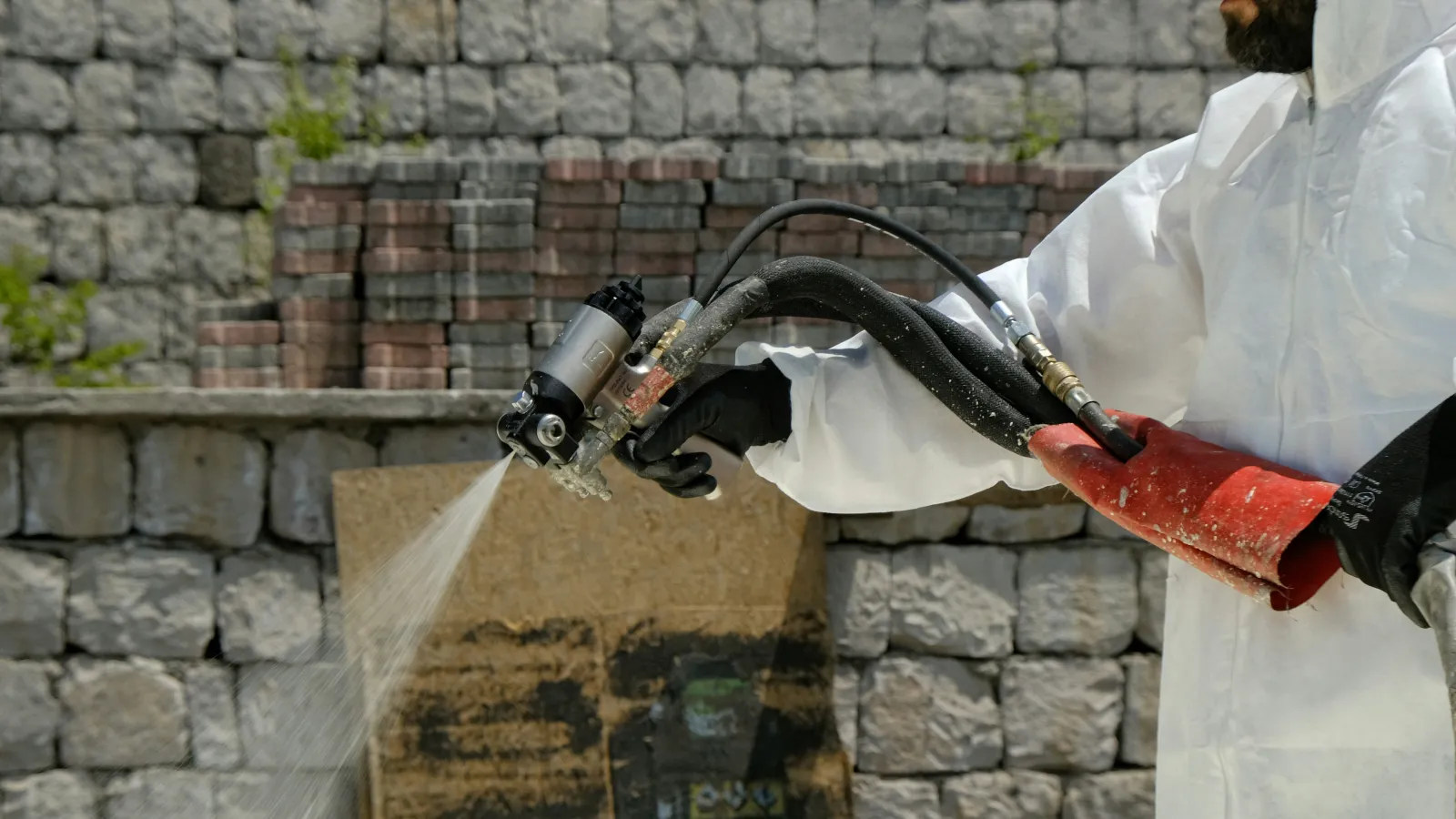Spray
foam insulation provides exceptional efficiency, moisture control, and
energy savings, making it the ideal solution for insulating crawl spaces. For
homeowners seeking to maintain a healthy, energy-efficient home, understanding
why spray foam is the best option for crawl spaces is critical. This blog
explains what makes spray foam insulation the superior choice and explore the
benefits, types, and best practices for crawl space insulation.
Should You Spray Foam Insulate in a Crawl Space?
Crawl spaces are often overlooked, yet they play a significant role in
your home's overall efficiency and air quality. Proper insulation, particularly
with spray foam, is essential to prevent moisture intrusion, improve energy
efficiency, and maintain a consistent indoor temperature.
Spray foam insulation stands out because it creates an air-tight seal,
effectively reducing drafts, preventing heat loss, and protecting your home
from outside elements. Unlike traditional insulation materials like fiberglass
or cellulose, spray foam doesn't sag, settle, or absorb moisture over time.
This makes it ideal for the challenging environment of a crawl space, where
humidity and temperature fluctuations can lead to issues like mold and wood
rot.
For example, if you live in a humid region, the air in your crawl space
can carry moisture into your home, potentially leading to higher energy bills
and costly repairs. Spray foam acts as a barrier, sealing gaps and cracks where
air and moisture can enter. This prevents these problems from taking root in
the first place.
In addition to energy savings, spray foam insulation can also improve
your home's air quality. By sealing off your crawl space, you reduce the
chances of allergens, dust, and pollutants infiltrating your living spaces.
This is especially beneficial for families with allergies or respiratory
conditions.
What Type of Insulation is Best for a Crawl Space?
When deciding on insulation for your crawl space, it's important to weigh
your options carefully. While fiberglass, rigid foam board, and mineral wool
are common choices, spray foam insulation surpasses these materials in
performance and durability.
Why Spray Foam Insulation Outperforms Other Options
- Moisture Resistance
Crawl spaces are prone to moisture issues, which can compromise other insulation types. Fiberglass, for instance, can absorb water, lose its insulating properties, and become a breeding ground for mold. Spray foam, on the other hand, is water-resistant and prevents moisture from penetrating the space. - Air Sealing
Spray foam's ability to expand and adhere to surfaces ensures a complete seal, closing off even the smallest gaps. This is critical in a crawl space, where air leakage is a common issue. By blocking airflow, spray foam enhances energy efficiency and keeps your home comfortable year-round. - Longevity
Unlike traditional materials that degrade or compress over time, spray foam insulation maintains its effectiveness for decades. This long lifespan offsets the higher initial cost, making it a cost-effective investment in the long run.
Open-Cell vs. Closed-Cell Spray Foam
When insulating your crawl space with spray foam, you can choose between
open-cell and closed-cell foam. Each type has unique benefits:
- Open-Cell Foam: Ideal for soundproofing and
creating an effective air barrier, this type of foam is more affordable
but less dense.
- Closed-Cell Foam: Denser and more durable,
closed-cell foam provides a stronger vapor barrier and higher R-value,
making it better suited for crawl spaces exposed to extreme moisture or
temperature conditions.
In most cases, closed-cell foam is the preferred choice for crawl spaces
due to its superior moisture resistance and structural reinforcement.
Should I Spray Foam Under My Floor?
Insulating beneath your floors is another critical step in optimizing
your home's energy efficiency, particularly in homes with crawl spaces. Adding
spray foam under your floors provides several benefits, including temperature
regulation, soundproofing, and reduced energy costs.
Benefits of Spray Foam Insulation Under Floors
- Improved Comfort
Floors above uninsulated crawl spaces can feel uncomfortably cold during winter. Spray foam insulation helps maintain consistent temperatures by preventing heat transfer from the crawl space to your floors. - Energy Savings
By minimizing heat loss through the floors, spray foam can significantly lower your heating and cooling costs. The insulation works year-round, keeping warm air inside during winter and blocking outdoor heat in the summer. - Enhanced Durability
Spray foam reinforces your flooring system by filling gaps and cracks, reducing wear and tear over time.
For instance, homeowners who have invested in spray foam insulation for
their floors often notice a dramatic improvement in indoor comfort and a
reduction in monthly energy bills. This makes it a practical choice for anyone
considering crawl space upgrades.
Is Spray Foam Safe for Under-Floor Applications?
One of the most common concerns about spray foam insulation is safety.
When installed by professionals, spray foam is completely safe and highly
effective. Its non-toxic properties and resistance to mold growth make it a
reliable solution for homes with crawl spaces.
Moreover, spray foam is versatile enough to adapt to the specific needs
of your home. For example, in older homes with drafty floors, it can seal
problem areas without requiring extensive renovations.
How to Maximize the Benefits of Spray Foam Insulation
To ensure you get the most out of spray foam insulation, consider the
following best practices:
- Hire a Professional Installer
Proper installation is key to achieving the desired results. A professional will assess your crawl space's condition, recommend the appropriate type of spray foam, and ensure it's applied evenly and effectively. - Address Moisture Issues First
Before installing spray foam, make sure to address any standing water or drainage problems in your crawl space. This will prevent future issues and enhance the insulation's performance. - Pair Insulation with Vapor
Barriers
In some cases, adding a vapor barrier to your crawl space can provide additional protection against moisture. This combination works particularly well in humid climates. - Regular Maintenance
While spray foam is durable, periodic inspections can help identify any issues early and maintain its effectiveness over time.
Why Spray Foam Insulation is Worth the Investment
Although the upfront cost of spray foam insulation may be higher than
other materials, its long-term benefits far outweigh the initial expense. From
energy savings and improved comfort to enhanced durability and air quality,
spray foam insulation is an investment that pays for itself over time.
Whether you're insulating your crawl space, floors, or both, choosing
spray foam ensures you're making the best choice for your home and family.
Request an Estimate from USA Insulation
If you're ready to experience the benefits of spray foam insulation, contact USA Insulation's expert technicians today. With the right installation, you'll enjoy a more comfortable, efficient, and healthy home for years to come. Request a free estimate today!



